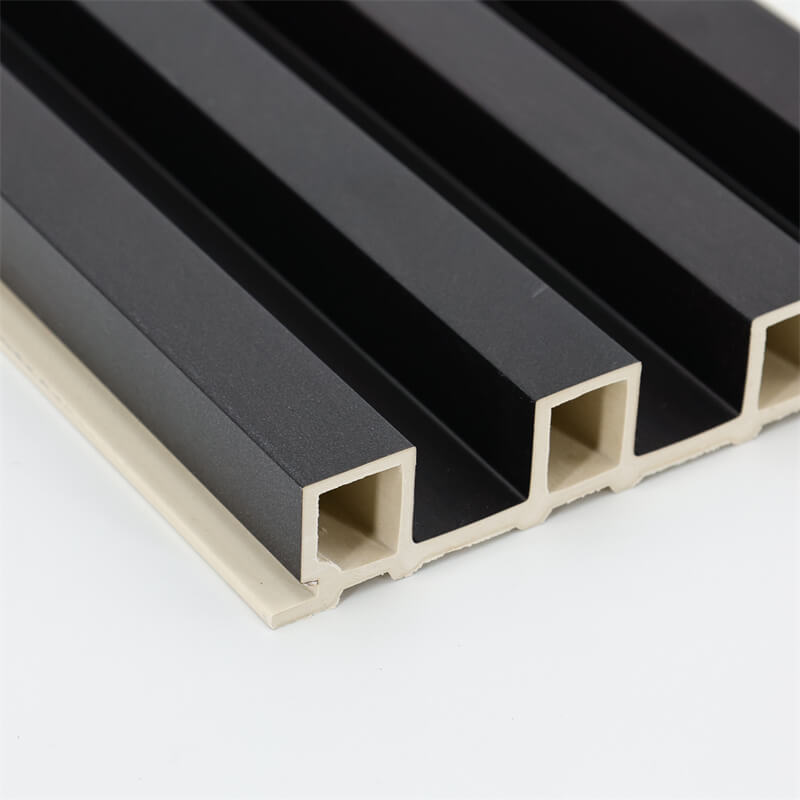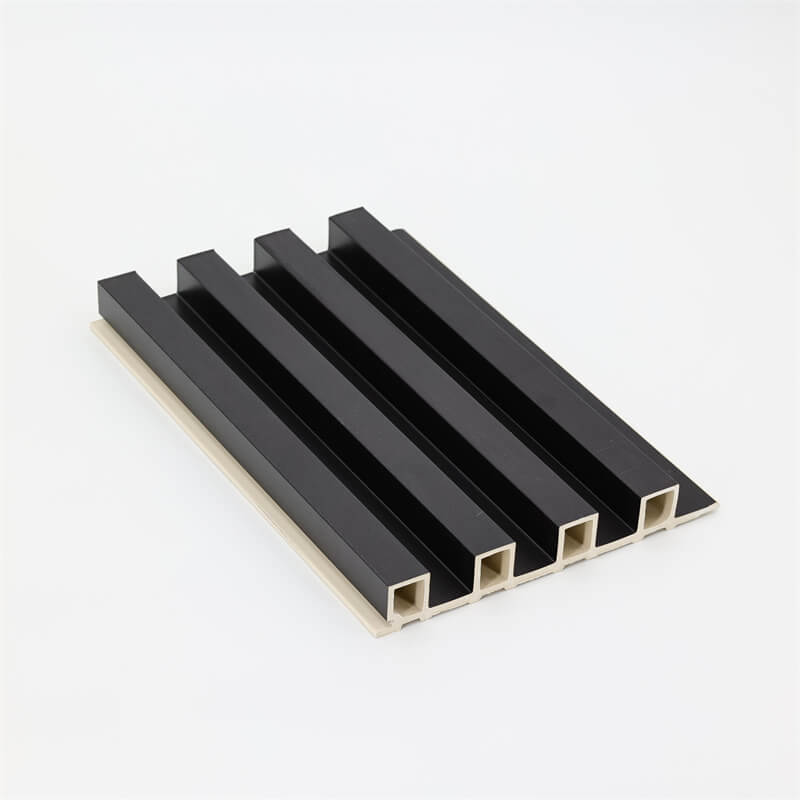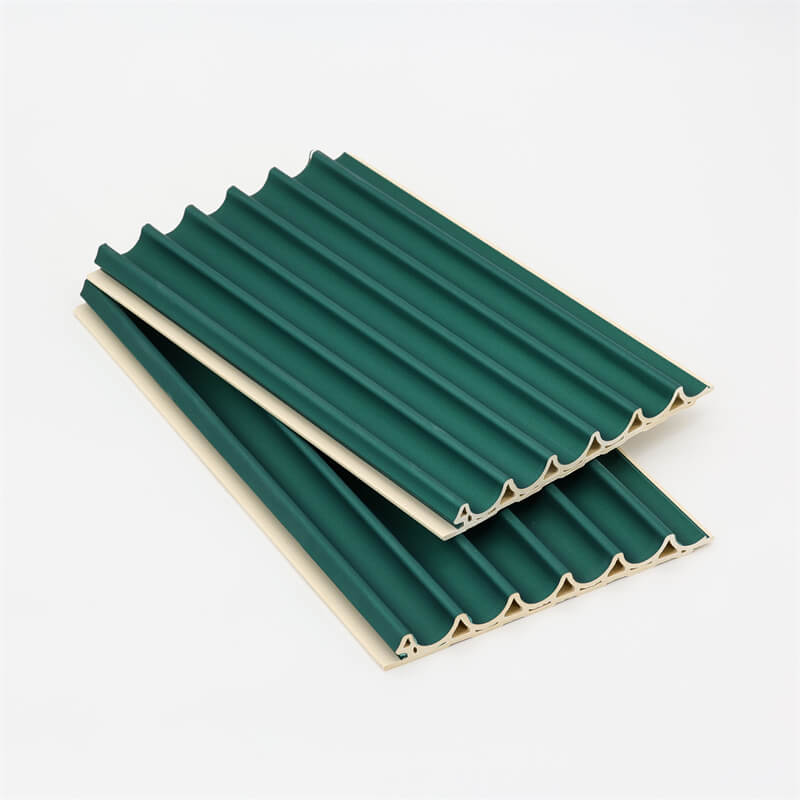
In the realm of outdoor design and landscaping, the integration of natural elements can greatly enhance the appeal and aesthetics of any space.
WPC wood slat panels have emerged as a popular choice among designers and homeowners alike due to their ability to add texture and visual interest to outdoor areas.
These panels are manufactured using a blend of wood fibers and recycled plastic, making them an eco-friendly and durable alternative to traditional wood materials.
This article explores the benefits and applications of WPC wood slat panels, as well as key considerations when choosing a manufacturer or supplier.
I. Understanding WPC Wood Slat Panels
WPC, or Wood Plastic Composite, is a material that combines the strength and natural beauty of wood with the durability and weather resistance of plastic.
WPC wood slat panels are made by mixing wood fibers or flour with plastic, typically high-density polyethylene (HDPE), and other additives.
This combination results in a product that offers the warm look of wood while being more resistant to rot, insects, and UV rays, making it an excellent choice for outdoor applications.
Benefits of WPC Wood Slat Panels WPC wood slat panels offer several advantages over traditional wood panels, making them an attractive option for landscaping projects.
These benefits include:
WPC panels are highly resistant to moisture, rot, and decay, ensuring their longevity even in harsh weather conditions.
They are also less prone to warping, cracking, or splintering, providing a low-maintenance solution for outdoor areas.
As WPC panels are composed of recycled materials, they contribute to the reduction of deforestation and waste.
By choosing WPC wood slat panels, you are making an environmentally conscious decision for your landscaping projects.
These panels can be used in various outdoor settings, such as fences, privacy screens, accent walls, and decorative elements.
They are available in different sizes, designs, and colors, providing endless possibilities to enhance the visual appeal of outdoor spaces.
Applications of WPC Wood Slat Panels WPC wood slat panels can be incorporated into landscaping projects in numerous ways, offering both functional and aesthetic benefits:
When used as fencing, these panels provide privacy and security while adding a touch of elegance to the outdoor area.
The slatted design allows for airflow while preserving the visual appeal.
WPC wood slat panels can be utilized to create striking accent walls or dividers, defining different sections of the landscape while adding depth and texture.
Incorporating these panels into pergolas, trellises, or outdoor furniture can bring a sense of cohesion to the design, seamlessly blending the outdoor space with natural elements.

II. Choosing a Manufacturer or Supplier
When considering WPC wood slat panels for your landscaping project, it is essential to choose a reputable manufacturer or supplier. Here are some key factors to consider:
Quality and Materials: Ensure that the manufacturer uses high-quality materials and adheres to strict manufacturing standards.
Look for panels that have been tested for durability, resistance to weathering, and colorfastness.
A reliable manufacturer or supplier should offer a wide range of panel sizes, designs, and colors to cater to various design preferences and project requirements.
This ensures flexibility and allows you to find the perfect fit for your outdoor space.
While price is a crucial consideration, it should not be the sole determinant.
Evaluate the overall value offered by the manufacturer, considering factors such as product quality, warranty, customer service, and post-purchase support.
Understanding the manufacturer’s factory and production process can give you insights into their commitment to quality control and sustainable practices.
Look for certifications or accreditations that validate their adherence to industry standards.
III. Price Considerations and Budgeting
The cost of WPC wood slat panels can vary depending on factors such as panel size, design complexity, and quantity required.
While it is essential to stay within your budget, it is equally important to prioritize quality and longevity.
Comparing prices from different suppliers and manufacturers can help you find a balance between affordability and quality.
Requesting Quotes: Reach out to multiple suppliers or manufacturers to request detailed quotes that outline the cost per panel, any additional charges, and shipping fees.
This will allow you to make an informed decision based on your budget.
Long-term Cost Analysis: While WPC panels may have a higher upfront cost compared to traditional wood materials, their long-term durability and low maintenance requirements can result in cost savings over time.
Consider the overall lifecycle cost when evaluating different options.
IV. Maintaining WPC Wood Slat Panels
Proper maintenance ensures the longevity and visual appeal of WPC wood slat panels.
While these panels require less maintenance compared to traditional wood, a few simple steps can keep them looking their best:
Regular Cleaning: Use mild soap, water, and a soft brush to remove dirt, grime, or stains.
Avoid using abrasive cleaners or tools that may damage the panel surface.
Inspect for Damage: Periodically inspect the panels for any signs of wear, damage, or loose fasteners.
Promptly address any issues to prevent further deterioration.
Sealing and Finishing: While WPC panels are resistant to moisture, applying a protective sealant or finish can provide an additional layer of protection against the elements, ensuring their longevity.
WPC wood slat panels offer a versatile and visually appealing solution for enhancing outdoor areas through the addition of texture and interest.
Their eco-friendly nature, durability, and ease of maintenance make them a popular choice among landscape designers and homeowners.
When selecting a manufacturer or supplier, consider factors such as quality, range of options, price, and factory production processes.
By incorporating WPC wood slat panels into your landscaping project, you can create a stunning outdoor space that seamlessly blends with nature while enjoying the benefits of a long-lasting and sustainable material.
